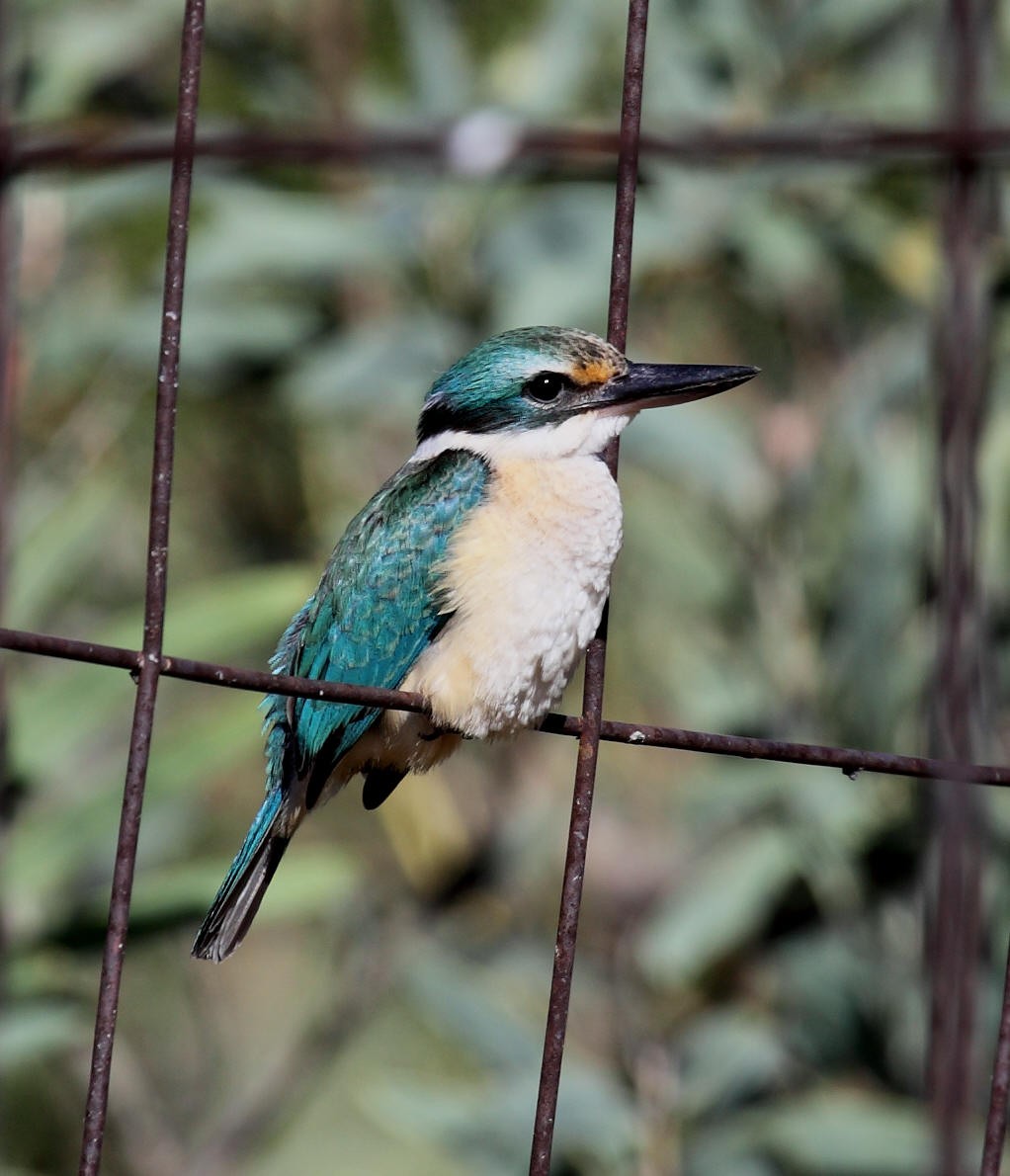Sacred Kingfisher
A species of Australo-pacific Kingfishers Scientific name : Todiramphus sanctus Genus : Australo-pacific Kingfishers
Sacred Kingfisher, A species of Australo-pacific Kingfishers
Botanical name: Todiramphus sanctus
Genus: Australo-pacific Kingfishers
Content
Description People often ask General Info
 Photo By http://www.comebirdwatching.blogspot.com/ , used under CC-BY-SA-3.0 /Cropped and compressed from original
Photo By http://www.comebirdwatching.blogspot.com/ , used under CC-BY-SA-3.0 /Cropped and compressed from original Description
The sacred kingfisher is a medium-sized kingfisher, measuring 20–23 cm (7.9–9.1 in) long. Males weigh 28–61 g (1.0–2.2 oz) and females 28–56 g (1.0–2.0 oz). They are mostly blue-green to turquoise above, with white underparts and collar feathers, a black mask and buff lores. Both sexes are similar, but females are usually greener, duller and less buff beneath. Juveniles have buff or mottled brown edges on the collar, underparts and upper-wing coverts. 
Size
22 cm
Colors
Green
Yellow
Blue
Life Expectancy
20 years
Nest Placement
Tree
Feeding Habits
Sacred Kingfisher consumes a varied diet including invertebrates, small crustaceans, fish, amphibians, and occasionally small birds and rodents. It employs 'sit-and-wait' tactics on low branches, utilizing sally-pounce and sally-strike maneuvers to capture prey, which is then beaten and swallowed at its perch.
Habitat
Sacred Kingfisher's habitat ranges from various woodland types, including eucalypt forests and Acacia scrublands, to tussock grasslands and melaleuca swamps. This species also adapts to coastal environments like vegetated dunes and mangroves. During non-breeding periods, they migrate to edge habitats including farmlands, parks, and gardens, especially in New Guinea, and in New Zealand, they frequent native forest edges, shifting to coastal farmlands and estuaries post-breeding.
Dite type
Carnivorous
People often ask
General Info
Feeding Habits
Bird food type
Species Status
Not globally threatened.

 Photo By http://www.comebirdwatching.blogspot.com/ , used under CC-BY-SA-3.0 /Cropped and compressed from original
Photo By http://www.comebirdwatching.blogspot.com/ , used under CC-BY-SA-3.0 /Cropped and compressed from original